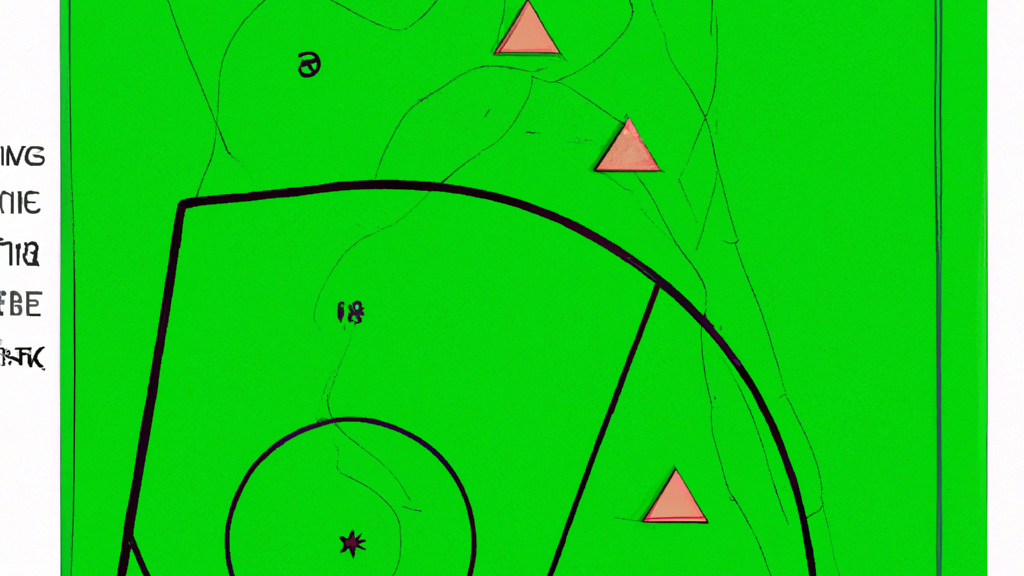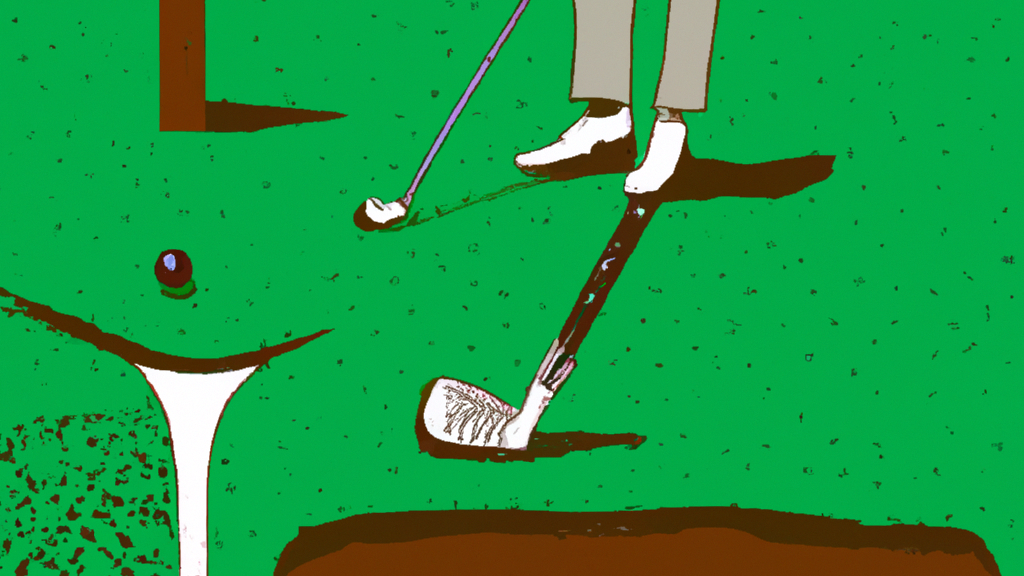THE POWER OF GRATITUDE IN GOLF INSTRUCTION: CULTIVATING A POSITIVE AND SUPPORTIVE LEARNING ENVIRONMENT
Golf is a sport that requires a lot of patience, focus, and dedication. It’s not just about hitting the ball, but also about understanding the course, the weather, and your own mental and physical state. That’s why having a positive and supportive learning environment is crucial for golfers of all levels. And one of the most powerful tools for creating such an environment is gratitude. In this blog post, we’ll explore the power of gratitude in golf instruction and how it can help you become a better golfer, a better teacher, and a better person.
Whether you’re a seasoned pro or a beginner, you’ll find valuable insights and practical tips on how to cultivate a positive and supportive learning environment that will enhance your golfing experience and your life. So, let’s tee off and discover the power of gratitude in golf instruction!

THE POWER OF GRATITUDE IN GOLF INSTRUCTION: CULTIVATING A POSITIVE AND SUPPORTIVE LEARNING ENVIRONMENT
Golf is a sport that requires a lot of patience, focus, and discipline. It is a game that can be both challenging and rewarding, and it is no secret that golfers are always looking for ways to improve their game. One of the most important aspects of golf instruction is creating a positive and supportive learning environment. This is where the power of gratitude comes in. Gratitude is the act of being thankful and appreciative of the good things in life. It is a powerful emotion that can have a profound impact on our mental and emotional well-being.When we practice gratitude, we are more likely to feel positive emotions such as happiness, contentment, and joy. This positivity can spill over into other areas of our lives, including our golf game. In golf instruction, cultivating a positive and supportive learning environment is essential. Golfers need to feel comfortable and confident in order to learn and improve. When golfers feel supported and encouraged, they are more likely to take risks, try new things, and push themselves to be better. This is where gratitude comes in. Gratitude can help create a positive and supportive learning environment in several ways.
First, it can help golfers focus on the good things in their game. Instead of dwelling on mistakes or shortcomings, golfers can focus on the things they are doing well. This can help build confidence and motivation, which are essential for improvement. Second, gratitude can help golfers appreciate the people around them. Golf is often a social sport, and golfers rely on their coaches, caddies, and fellow players for support and guidance. When golfers practice gratitude, they are more likely to appreciate the people around them and the role they play in their game.
This can help build stronger relationships and a more supportive community. Third, gratitude can help golfers stay positive and resilient in the face of challenges. Golf is a game that can be frustrating and difficult, and it is easy to get discouraged when things don’t go as planned. When golfers practice gratitude, they are more likely to stay positive and focused, even when things are tough. This can help them bounce back from setbacks and stay motivated to improve. So how can golfers and golf instructors cultivate gratitude in their game? Here are a few tips: 1.
Start each practice or round with a gratitude exercise. Take a few minutes to reflect on the things you are grateful for in your game and in your life. This can help set a positive tone for your practice or round and help you stay focused on the good things. 2. Practice positive self-talk. Instead of criticizing yourself for mistakes or shortcomings, focus on the things you are doing well. Use positive affirmations to build confidence and motivation. 3. Express gratitude to the people around you.
Take the time to thank your coach, caddy, or fellow players for their support and guidance. This can help build stronger relationships and a more supportive community. 4. Focus on the process, not just the outcome. Instead of getting caught up in winning or losing, focus on the things you are doing to improve your game. Celebrate small victories and progress along the way. 5. Embrace challenges as opportunities for growth. Instead of getting discouraged by setbacks or challenges, see them as opportunities to learn and improve.
Practice gratitude for the lessons you are learning and the progress you are making. In conclusion, the power of gratitude in golf instruction cannot be overstated. By cultivating a positive and supportive learning environment, golfers can improve their game and their overall well-being. By practicing gratitude, golfers can focus on the good things in their game, appreciate the people around them, stay positive and resilient in the face of challenges, and ultimately, become better golfers and better people.
So the next time you step onto the course, take a moment to practice gratitude and see how it can transform your game.

- Creating a Classroom Environment That Promotes Positive Behavior
proach to supporting the learning and positive behavior of all students … identify the instructional, social, affective, cultural, environmental, and. - Creating a Positive Learning Environment | Gopher PE Blog
Accomplished teachers of physical education create and sustain a welcoming, safe, and challenging environment in which students engage in and enjoy physical … - 7 Strategies to Improve Student Learning in the Classroom – ESS
Having compassion and empathy. Teachers who enjoy working with students show it, and this has a positive influence on student learning. · Creating a secure and … - 10 Tips for Creating a Fertile Environment for Kids’ Creativity and …
Oct 3, 2017 … Mitchel Resnick of the MIT Media Lab applies the Creative Learning Spiral to show how parents and educators can better support kids’ … - New Jersey Professional Standards for Teachers Alignment with …
The teacher understands how learners grow and develop, recognizing that patterns … communities to establish positive and supportive learning environments. - Creating a Positive Parent Spectator Environment in Your School
Dec 20, 2022 … Just as coaches must become certified to coach high school sports, the NFHS also offers supportive parent classes that lead to a National Parent … - Building Positive Relationships with Fellow Educators | NEA
Jun 19, 2020 … Simple steps to creating a more positive work environment. … but in today’s highly demanding education atmosphere, teachers may find … - 10 tips for cultivating creativity in your kids |
Mar 31, 2020 … Turns out, it’s less about “teaching” creativity to children — and more about creating a fertile environment in which their creativity will take … - FAQs – Frequently Asked Questions | First Tee
We offer group golf lessons to kids and teens ages 5-18, regardless of … and our coaches are trained in creating a supportive environment to make kids … - Building a Positive School Climate: What Principals Have Done to …
Philosophy for Schools which is a program aimed at creating a safe and supportive school climate focused on classroom management, engaged learning, positive …
Interesting facts about The Power of Gratitude in Golf Instruction: Cultivating a Positive and Supportive Learning Environment
- Golf is one of the oldest sports in the world, with its origins dating back to 15th century Scotland.
- The first recorded game of golf was played on March 26, 1297 by King James II of Scotland at Bruntsfield Links in Edinburgh.
- The term “caddie” comes from the French word “cadet,” which means younger son or assistant.
- The longest hole in professional golf is the par-5 fifth hole at Green Eagle Golf Course in Germany, measuring a whopping 666 yards (609 meters).
- In Japan, it’s considered good luck to make a hole-in-one and tradition dictates that you must buy drinks for everyone present at the course that day.
- Professional golfer Phil Mickelson has won five major championships but has also finished as runner-up six times – more than any other player without winning that particular major tournament.
- Augusta National Golf Club – home of The Masters tournament – was originally an indigo plantation before being converted into a golf course by Bobby Jones and Clifford Roberts in 1931.





